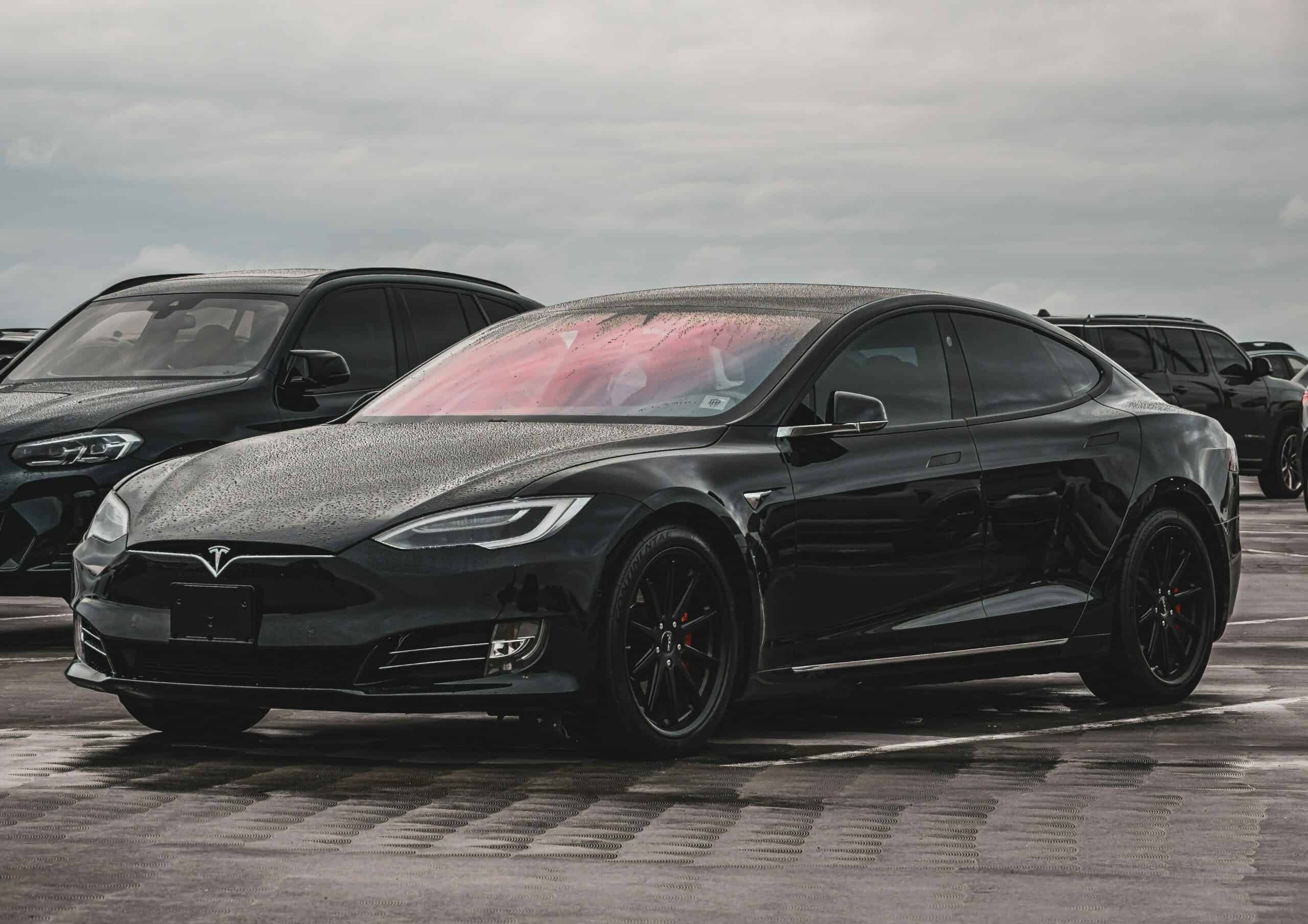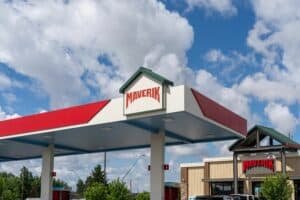
Photo by Daniel Shapiro on Unsplash
October 21, 2024
Should Uber and Lyft Be Worried About Tesla’s Robotaxi?
In the ride-hailing industry, Uber and Lyft dominate the market. Despite regulatory hurdles and profit challenges, both companies have significantly disrupted the traditional taxi service business model and practically created the gig economy. However, there might be a significant new player in town with the potential to knock the two down a few pegs: Elon Musk’s Tesla.
Musk unveiled his new vision — robotaxis — during a livestreamed event on Oct. 10. The plan is to build battery-powered Cybercabs without steering wheels, brake pedals, or accelerator pedals capable of ferrying passengers without a driver.
“It’ll be like sitting in a comfortable little lounge,” Musk said. “Yeah, it’s going to be awesome.”
Tesla intends to sell rides using its own fleet of driverless robotaxis, as reported by CNN. If that comes to fruition, the new competition could force Uber and Lyft to expand their own autonomous vehicle offerings or possibly seek partnerships with Tesla.
Additionally, Musk noted that the service would reduce ownership costs for Tesla buyers. Using Tesla’s platform to coordinate trips, they will be able to rent out their vehicles when not in use.
Full Self-Driving Software Is Not Yet Ready
While the threat to Uber’s and Lyft’s business models is looming, Tesla may be years away from putting the technology to commercial use on the road. Tesla’s Full Self-Driving (FSD) software has the potential to provide a safer ride than cars driven by humans, according to Musk. Yet, recent tests completed by AMCI Testing revealed the technology is “unreliable” and “potentially dangerous.” During a 1,000-mile evaluation of the software, a human driver had to take control of the vehicle at least once every 13 miles on average, for a total of 75 interventions.
In July, Musk told investors that FSD would potentially be ready by the end of the year. However, he quickly backtracked with, “I’ve been wrong in the past. I may be wrong this time.”
At the recent event, Musk said that the robotaxis will be ready by 2026. Yet, that might be exceedingly optimistic. After years of hype, it still took Tesla four years to launch the long-anticipated Cybertruck.
In the future, Musk could offer incentives to Tesla drivers to encourage participation in the proposed ride-hailing service with discounted or even free FSD software upgrades. To get a leg up on Uber and Lyft, lower rates for riders would foster faster adoption of the service as well.
In the short term, Lyft and Uber may not be concerned with Tesla’s robotaxi or its ride-sharing app. From the looks of it, both ride-hailing companies have time to develop counter strategies and invest in their own self-driving technologies. Yet, in the long term, with Musk’s track record of innovation and boldness, Uber and Lyft could lose market share, profit, and even drivers if they choose to wait and see what happens.
Discussion Questions
Given the regulatory and technological challenges that autonomous vehicles still face, do you believe Tesla’s robotaxi could truly disrupt the ride-hailing market in the near future?
How do you think the current business models of Uber and Lyft, which rely heavily on human drivers, will need to adapt if fully autonomous services like Tesla’s robotaxi become mainstream?
With Uber and Lyft already facing profitability challenges, how significant a threat do you think Tesla’s robotaxi will be in terms of pricing, especially if the robotaxi offers a cheaper, fully autonomous alternative to human-driven rides?
Poll
BrainTrust
Mark Ryski
Founder, CEO & Author, HeadCount Corporation
Melissa Minkow
Director, Retail Strategy, CI&T
Recent Discussions







Any competitor is a concern. However, Tesla’s plans seem very embryonic, and the technology isn’t currently in place to launch this and make a quick impact. It’s also the case that Uber and Lyft already have their own self-driving technology. We got an autonomous Uber (powered by Waymo) just the other day. It was very good. So, yes absolutely to the disruption of self-driving generally. No, not yet, to the specific threat of Tesla having a massive impact on incumbent ride-sharing services.
Whether it’s Tesla or someone else, autonomous vehicles will be a large part of the future and will greatly impact Uber and Lyft. If those companies aren’t already figuring out how they’ll continue to leverage their autonomous tech to compete when we live in that more established world, they’re well behind.
I echo Neil’s comment about Waymo – I rode in Waymo cars twice and found the experience excellent. Waymo is conspicuously absent from this article. Waymo (Google owned), has not only satisfied regulatory requirements for autonomous driving services, but is already expanding coverage in San Francisco, Los Angeles and Phoenix. Tesla (or should I say Elon Musk), talks a good game, but self-evidently, Waymo is already miles ahead. And while both Uber and Lyft were trying to develop their own autonomous vehicles, my understanding is that both company’s have given up developing and are instead partnering with others. The reliance on human drivers remains a constant source of challenges for Uber and Lyft including recruiting/retaining good drivers, thwarting lawmakers who want to deem drivers employees and bad press/law suits that arise from rogue human drivers who do bad things. So while it may be a very long time before the need for human drivers is eliminated, it’s already begun.
No, they should be worried that they don’t seem like viable businesses, either loss-making or dependent on exploiting marginal/gig workers. I guess the latest Musk utterance is one more thing to worry about.
It will be a very long time before Uber and Lyft have to worry about Robotaxi. Only a very small percentage of Americans have confidence in self-driving vehicles. Long-term, that may change.
The presence of human drivers, communicators, and handlers still has certain clear advantages.
Uber and Lyft have put in place the groundwork for self-driving car success by eliminating the fear of using a private vehicle and reducing the reducing the need for extra car ownership. Taking the next step to autonomous transportation is now a less risky next step for passengers. If you’ve had some of the rideshare drivers I’ve had, autonomous rides may offer a superior experience once the tech is in place.
Let’s ask another question. Should Amazon be worried about Walmart or Target? My point is that any major brand that is on top, such as Uber or Lyft, should always be looking over their shoulder, not out of fear, but out of curiosity. What other competitors, technologies, processes, etc., are others using that will create current or future competition? And what adjustments need to be made to stay ahead and competitive? (Is it autonomous Uber and Lyft vehicles?) There are disrupters in virtually every industry, and the “ride-hailing” industry is no exception.
Uber and Lyft have already seen the future, and it is autonomous vehicles. They’re already working on plans to address this. Should they be worried? I would say concerned. They need to be aware of what Tesla is doing, but at the moment, it’s so early on, and other are so many other things that are affecting Tesla’s bottom line that I wouldn’t lose sleep over it. Be aware, and plan for your own future would be my advice.
Tesla’s robotaxi, while at an early development stage, is a reminder that incumbents have to be aware of new developments and thinking of strategies to evolve their value proposition.
Uber should absolutely be worried (any organization should be worried by either a new entrant or a new business delivery model); however, I think the more interesting question is – who else should be worried. Given the vast amounts of data that Tesla is collecting (within its existing fleet business and within the TBD robotaxi business), the obvious next entity that should be concerned are traditional auto insurance companies like State Farm, Progressive, and Allstate. Tesla has the opportunity to revolutionize car actuarial models with all of the new data dimensions it will capture. Beyond that, the # of automobiles in urban centers would decrease thus adjusting a critical component of risk modeling (i.e. # vehicles that pose a liability). Continuing down the value chain, the demand for parking garage operators would also need to enhance their value proposition as the robotaxis would continuously operate vs. sitting idle in parking spaces for 95% of the day like traditional cars. Pretty interesting game of dominoes!
We’ll never have mass produced cars that are affordable. We’ll never be able to fly. We’ll never have commercial air flight. We’ll never send a man to the moon. We’ll never have space commutes. We’ll never get to mars. We’ll never have driverless vehicles. We will, all in time.
Tesla’s robotaxi is still a few years off, but Uber and Lyft can’t afford to sit back. If they don’t actively advance their own autonomous strategies, they risk losing significant ground once Tesla enters the market.
Near-term Robotaxi will likely evolve as another consumer option, rather than truly a competitive “either/or” threat against Uber/Lyft. Trials likely starts in smaller communities/cities before big city adoption. Some will feel most comfortable riding with a person at the wheel. Some will prioritize saving money via self-driving. Due to local governments having imposed mandatory wages, benefits, fees, and taxes through Uber/Lyft, the upward pressure to launch self-driving sooner will only grow.
Uber/Lyft and Tesla may overlap in technology, software, and mapping. But long-term, I give Tesla the edge thanks to the constant intake and feedback of driver analytics and machine learning from their own cars (which Uber/Lyft does not have).
Yes they should be worried however not for a while. First, Elon Musk needs to survive the inevitable regulatory hurdles, which is not a given (SpaceX was recently denied an approval they needed due to Mr. Musk’s political views-look it up this is true). Second people need to get used to the brave new world this takes us to.
My crystal ball says give this 5+ years. Then worry.